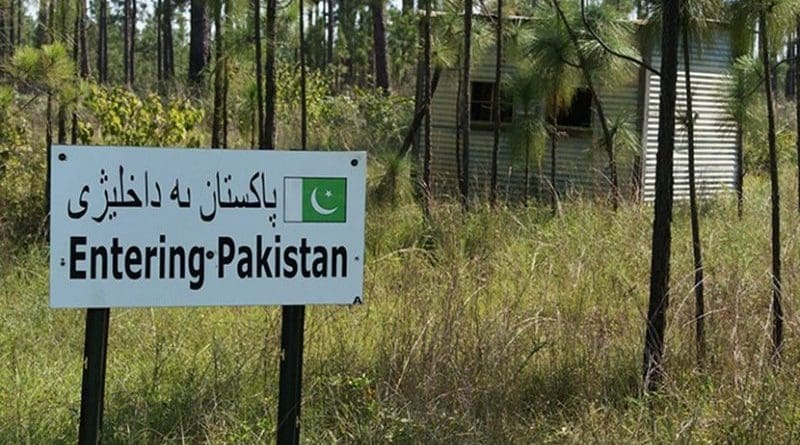Pakistan’s Conundrum – OpEd
Will the economic situation in Pakistan improve if a democratic government comes into power? Will there be structural reforms in Pakistan if a true leader comes into power?
Pakistan’s economic situation is getting worse day by day. The reliance of successive governments on bilateral and multilateral debt programs is increasing with time. Until now, Pakistan has approached the International Monetary Fund (IMF) more than two dozen times. Although the incumbent PDM government has announced that the default has been averted, economic instability, or stagflation, has not been deferred. On the other hand, economic pundits have continuously linked the contemporary economic crisis with the political instability that has been hunting it down since the inception of the country. Therefore, along with the complex history, corruption, and lack of accountability, the process of economic instability will prevail as long as structural reforms about causes of instability rather than consequences have not materialized.
Throughout the history of Pakistan, political instability has remained the predominant factor in taking the economy into recession as well as shackles. In the last 75 years, half of the leadership reigning era has contained dictators such as Field Marshall Ayub Khan, General Yahya Khan, General Zia-ul-Haq, and General Pervez Musharraf. On the other hand, not a single Prime Minister of Pakistan has ever managed to complete his five-year term in the history of Pakistan. Therefore, we can say that the continuous meddling of the military establishment in politics has resulted in strained civil-military relations and an Anocracy type of government throughout history.
Secondly, corruption is another menace in third-world countries, or Least Developed Countries (LDCs). It has a huge impact on the political, social, cultural, and economic lives of the masses within a country. The Lack of Transparency and accountability has led to vertical as well as horizontal leakages within the revenue and expenditure apparatus. Similarly, additional social and economic factors such as low income, inflation, and a lack of access to quality lifestyles exacerbated the process of corruption and led the country into twin deficits.
Thirdly, the low Tax-to-GDP ratio, which is approximately 9.5%, also affects the revenue sector. The tax collection through direct taxes, including property tax, Income tax, and Inheritance tax, is less than 10%, while indirect taxes such as the General Sales Tax (GST), customs Duty, and Federal Excise duty, etc., make up the majority of the revenue. Thus, Pakistan has been continuously presenting deficit budgets over the years.
In the previous Fiscal year, FY23, due to low Forex reserves, the PML-N-led government led by Shehbaz Sharif adopted import restriction policies. These Policies resulted in the closure of large-scale manufacturing (LSM) as well as Small and Medium Enterprises (SMEs). Consequently, these policies led to the unemployment of more than 8 million people. During this year, the industrial sector shrank by about -2.9% due to a lack of access to raw materials and machinery. Furthermore, the GDP growth rate was 0.29% in FY23 as compared to 6% in FY22.
Climate Change is another factor that has been hurting Pakistan’s economy since the Fall of Dhaka in 1971. Pakistan has suffered havoc from continuous flooding, torrential rains, glaciers melting, and cloud bursts. Last year’s flood damaged crops, infrastructure, and livestock. More than 1700 people lost their lives, and the country has faced a loss of more than $30 billion, although its contribution to global greenhouse gases (GHGs) is less than 1 percent.
Another loss-making sector that impacts the economic infrastructure is state-owned enterprises (SOEs). Enterprises such as Pakistan International Airlines (PIA), Pakistan Railways, Pakistan State Oil (PSO), Pakistan Petroleum Limited (PPL), and Pakistan Telecommunication Company Limited (PTCL) are getting subsidies regularly but pose a danger by making losses every fiscal year. Thus, instead of incentivizing them, the government should find a way to either privatize them or implement structural reforms.
Conversely, the lack of digitization and destruction of the informal economy is another hurdle to Pakistan’s economic growth. The Paper-based infrastructure poses a complex procedure in the shape of bureaucratic red tape and has led to a lack of accountability, time wastage, and corruption in the white-collar sector. On the other hand, the informal economy, which comprises 68% of the urban workforce, has seen difficulties in the form of a lack of recognition and destruction in Saddar Bazaar, Malir, Katchi Abadis, etc.
Last but not least, elite capture is a huge danger to the growth of the economy. Accordingly, less than 5% of the people owned 60% of the wealth in Pakistan. The Elite Interest—the Politician-Bureaucracy-Businessman Nexus—should be addressed with transparency and accountability; otherwise, it will have serious repercussions on the future of Pakistan.
In conclusion, we can say that the causes of economic instability, such as corruption, elite capture, and a lack of digitization, should continue unless structural reforms are implemented. Reforms about all these sectors, whether they are state-owned (SOEs) or private (informal economies) should be materialized for the betterment of the country. Furthermore, the government should incentivize and subsidize the export-led sectors rather than seek debt programs, as Pakistan is already facing Rs 265,578 in debt per head. In the end, the answers to all the questions depend on the political will of our ruling class.

